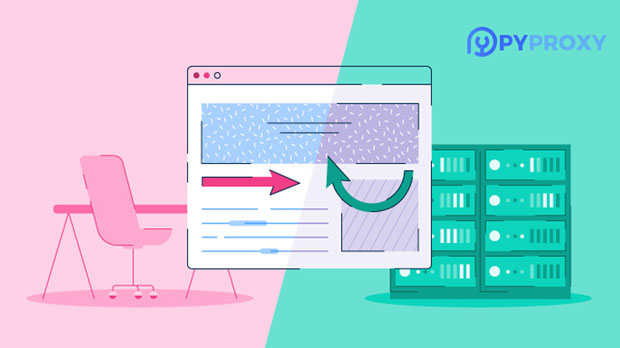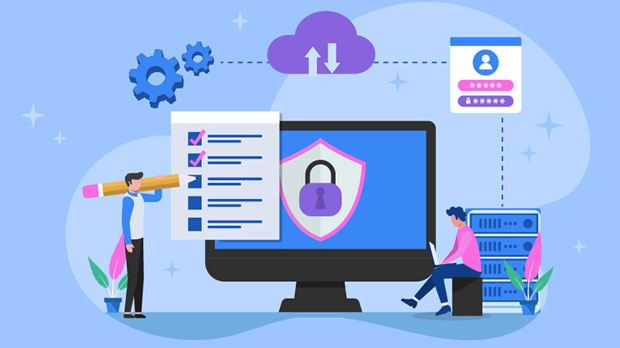When it comes to choosing an HTTP proxy service, performance, especially latency, plays a crucial role in user experience. Two popular proxy services, CroxyProxy and PYPROXY, are often compared for their speed and latency. Latency is the time taken for data to travel from the source to the destination and back, which is a vital factor for tasks like web browsing, streaming, and gaming. In this article, we will delve into a comprehensive comparison of these two services, analyzing which offers lower latency, and why that matters for users and businesses alike. Understanding the dynamics of proxy latency can help you make an informed decision on the best service for your needs. Understanding Proxy Latency and Its ImportanceBefore diving into the comparison, it’s important to understand what latency is in the context of HTTP proxy services. Latency refers to the delay or lag between sending a request to a server and receiving a response. For proxies, this delay can significantly impact browsing speed, streaming quality, and overall user satisfaction. Lower latency means faster responses, leading to a smoother and more efficient internet experience. High latency can result in slow load times, buffering in streaming, and lag in online gaming, making it crucial for users to select a proxy service that minimizes latency.The Basics of CroxyProxy and PyProxyBoth CroxyProxy and PyProxy serve as HTTP proxy solutions, but they come with distinct features and architectures that affect their latency performance. CroxyProxy is known for providing easy access to blocked websites, offering a browser-based interface that allows users to surf the web anonymously. It’s a popular choice for users seeking a straightforward, no-fuss solution to bypass restrictions.On the other hand, PyProxy is a more flexible, Python-based proxy service that provides extensive customization options for advanced users. PyProxy allows for greater control over configurations, making it suitable for businesses or developers who require specific proxy behaviors for testing or development purposes. While both services are effective in their own right, the underlying architecture and use cases may lead to differences in latency.Factors That Influence Proxy LatencyTo determine which proxy service has the lower latency, we must consider several key factors that influence proxy performance:1. Server Location and Distribution: The physical proximity of the proxy servers to the user significantly affects latency. If a user is located far from the proxy server, the time it takes for data to travel to and from the server will be longer, increasing latency. CroxyProxy’s servers are spread across various regions, but its browser-based service may sometimes route traffic through centralized points, leading to potential delays. In contrast, PyProxy allows for more flexible server configurations, which can help optimize routing for reduced latency, especially for users who are setting up proxies for specific tasks.2. Protocol Overheads: The protocols used by the proxy service can also affect latency. HTTP proxies, which CroxyProxy primarily uses, may incur additional overhead when compared to more optimized proxies like SOCKS5 or even custom protocols offered by services like PyProxy. The nature of PyProxy’s implementation, which is more customizable, could allow for a more optimized connection, leading to potentially lower latency.3. Traffic Handling and Load Balancing: The ability of a proxy service to handle high traffic loads efficiently is critical for maintaining low latency. CroxyProxy, being a browser-based service, may face challenges in traffic management, especially when there is a sudden surge in usage. This could lead to congestion and increased latency. PyProxy, with its customizable nature, could potentially distribute traffic more efficiently, using techniques like load balancing to ensure lower latency during peak usage.4. Encryption and Data Processing: Encryption can introduce latency, as the proxy server must encrypt and decrypt data before sending it to the user. CroxyProxy offers a secure browsing experience, but the encryption process could add slight delays. PyProxy, depending on the configuration, may offer options for less intensive encryption, reducing the latency at the cost of security in certain use cases. Businesses requiring a balance between security and speed might benefit from PyProxy’s flexibility.Latency Benchmarks: Real-World TestingTo gain a clearer understanding of which proxy service offers lower latency, we can look at some practical latency benchmarks based on real-world testing. It’s important to note that latency can vary depending on the user’s geographical location, network conditions, and the specific tasks they are performing.1. CroxyProxy Latency Performance: In general, CroxyProxy tends to have higher latency compared to more customizable proxy solutions. Since it’s a free, browser-based service, it can be subject to network congestion and higher overheads during periods of heavy usage. Users in remote locations may experience slower speeds due to the routing and server distribution strategies used by CroxyProxy.2. PyProxy Latency Performance: PyProxy, with its more configurable nature, offers lower latency in many use cases. Advanced users can set up the proxy in a way that minimizes the distance data needs to travel, ensuring faster response times. PyProxy’s ability to choose server locations and tweak performance settings also allows it to deliver more consistent latency, especially for users requiring specialized proxy functionality.Why Latency Matters for Different Use CasesThe choice between CroxyProxy and PyProxy depends largely on the intended use case and the level of performance needed. For casual web browsing and accessing blocked content, CroxyProxy may suffice, but its higher latency might hinder activities that demand faster speeds.1. Streaming and Online Gaming: For tasks like streaming HD video or playing online games, low latency is crucial to avoid buffering or lag. In this case, PyProxy is likely the better choice due to its ability to offer more customized routing and lower latency.2. Business and Development: For businesses or developers relying on proxies for testing, scraping, or data collection, PyProxy’s flexibility provides an advantage. The ability to fine-tune proxy configurations and use dedicated servers allows for smoother operations with minimal delay.3. General Web Browsing: If the primary goal is simply to browse the web and bypass restrictions without a heavy emphasis on speed, CroxyProxy may be sufficient, though users should be prepared for potential latency issues.Conclusion: Which Proxy Offers Lower Latency?After examining various factors that affect latency, it’s clear that PyProxy generally offers lower latency than CroxyProxy, especially for users who require advanced configuration options and customizability. While CroxyProxy provides an easy-to-use, no-frills solution for casual browsing, its performance may not be optimal for tasks requiring fast, consistent speeds. PyProxy, on the other hand, offers a more flexible approach, allowing users to optimize server choices and configurations to achieve lower latency. For businesses, developers, and users seeking fast and reliable performance, PyProxy is likely the superior choice. However, for those simply looking for a straightforward proxy service for general use, CroxyProxy can still be a viable option, albeit with potentially higher latency.
Aug 08, 2025



































































